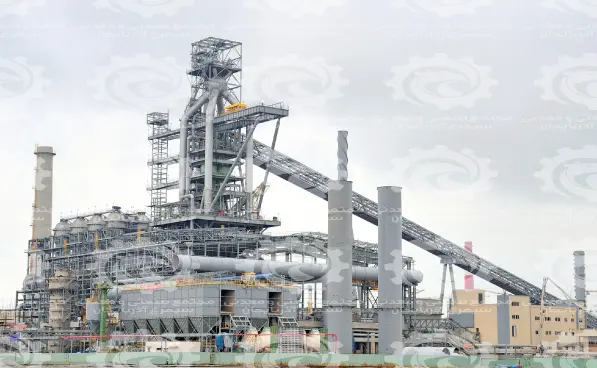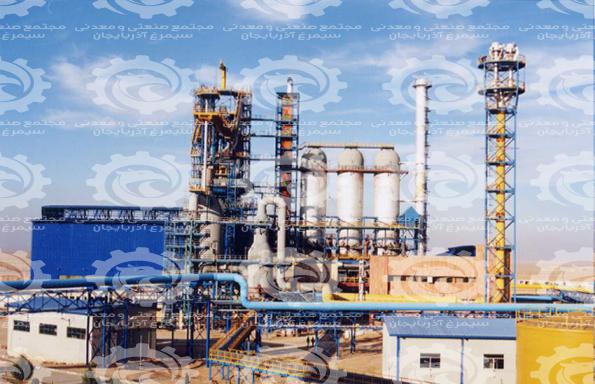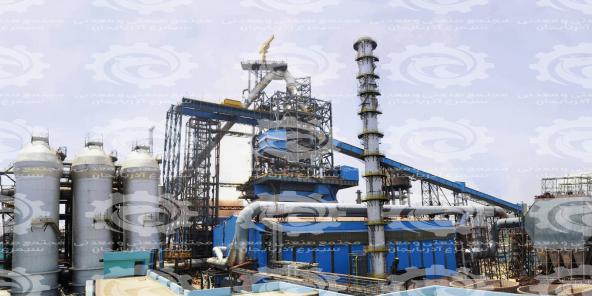Direct reduction iron Company
Direct regenerative iron (DRI), also known as sponge iron, is formed by the direct oxidation-reduction of iron ore (in the form of lumps, pellets or aggregates) to iron by a reducing gas or carbon element produced from natural gas or coal. Many minerals are suitable for direct regeneration. Direct reduction refers to solid state processes that reduce iron oxides to metallic iron at temperatures below the melting point of iron. For information about direct reduction iron Visit our collection’s website.

Direct reduction iron Formula
 Reduced iron gets its name from these processes, such as heating iron ore in a furnace at temperatures above 800 to 1,200 degrees Celsius (1470 to 2190 degrees Fahrenheit) in the presence of a synthetic gas reducing agent, a combination of hydrogen and carbon monoxide.
Reduced iron gets its name from these processes, such as heating iron ore in a furnace at temperatures above 800 to 1,200 degrees Celsius (1470 to 2190 degrees Fahrenheit) in the presence of a synthetic gas reducing agent, a combination of hydrogen and carbon monoxide.
The production of sponge iron and the subsequent operation of this method was the first method to obtain iron in the Middle East and Europe, where it was used at least until the sixteenth century. There is evidence that the flower method was also used in China, but China had built explosive furnaces to obtain cast iron up to 500 BC.
For information about direct reduced iron hazards Visit our collection’s website….
Buy direct reduction iron directly from company

In modern industry, direct reduction processes have been developed to specifically address the problems of conventional blast furnaces. Direct regenerative iron is successfully produced in various parts of the world, making it possible to produce specialized iron and steel products in a decentralized manner (separately with the older model of the so-called “steel complex” furnace). Primary investment (CAPEX) and operating costs (OPEX) are lower direct reduction plants than integrated steel plants, and are more cost-effective for developing countries where high-grade coal coke production is limited, although steel waste in general. Available for recycling.
Factors that directly affect iron production:
Iron with direct reduction has about the same amount of iron as cast iron, typically 90-94% of total iron (depending on the quality of the raw ore). Therefore, it is an excellent raw material for electric furnaces used by small mills, which allows them to use lower scrap to recharge or produce higher grades of steel.
Iron Briquettes (HBI) is a compressed form of direct regenerative iron designed to facilitate transportation, storage, and storage.
Hot-dip galvanized iron (HDRI) is a type of direct-reduction iron that is transferred hot and direct from the reduction furnace into the electric arc furnace, thus saving energy.
The direct reduction process uses pelletized iron ore or “lump” natural ore. An exception is the fluidized bed process, which requires mineral iron ore particles.
The direct reduction process can use natural gas contaminated with inert gases and prevent the need to remove these gases for other uses. However, any inefficient gas pollution in the reducing gas reduces the effect (quality) of the gas flow and the thermal efficiency of the process.
Powdered mineral resources and crude natural gas are both available in areas such as northern Australia and prevent the cost of fuel transportation. In most cases, the iron plant is directly rehabilitated near a natural gas source because the transportation of ore instead of gas is more economical.
The direct reduction iron method produces 97% pure iron.
For information about reduced iron formula You can visit our collection’s website.
You can contact us to buy and sell this product:
Sales consultant: Ms. Leila Nematzadeh
Ways of communication: Phone number: 02147623014
Phone number: 02147623014
 Phone number: 04133660491
Phone number: 04133660491
 Phone number: 09120169267
Phone number: 09120169267
 WhatsApp Response (Skype): click
WhatsApp Response (Skype): click
 Instagram: simurgh_steel_company@
Instagram: simurgh_steel_company@
 email: info@simurghsteelco.com
email: info@simurghsteelco.com
 email: ironore110@gmail.com
email: ironore110@gmail.com
 Facebook: ironore110@
Facebook: ironore110@
 LinkedIn: simurgh-iron-and-steel-company-a68295180@
LinkedIn: simurgh-iron-and-steel-company-a68295180@
 twitter: CoSimurgh@
twitter: CoSimurgh@

 Call number:
Call number:  Whats app:
Whats app:  Address: Salimi industrial Park, Tabriz, IRI
Address: Salimi industrial Park, Tabriz, IRI Instagram:
Instagram:  email:
email:  Facebook:
Facebook: 









